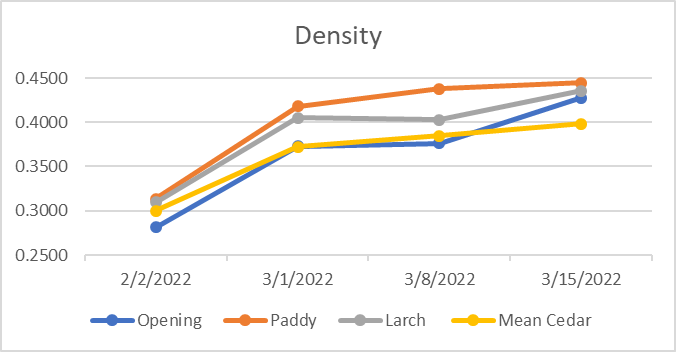The largest flood on record (since 2000) occurred at Takiya River on August 3rd during record-setting rainfall in the region of Murakami City over August 3rd and 4th. Unfortunately there was much flood damage within Murakami City as several rivers burst their banks, and at Takiya River catastrophic bank erosion and channel aggradation took place. Damage occurred to the staff gauge and at least one of the sensors recording river stage. A second stage sensor is assumed to be buried under about 50-60 cm of fresh sediment accumulation. The whole channel reach shows a similar level of sediment accumulation (channel aggradation). The excess of sediment in the channel has led to braided channel features where multiple channels are flowing around islands of sediment accumulation.
New daily precipitation records were set at several gauges, with maximums of 397 mm/d and 396 mm/day for Ishiguro Mountain and Takane gauges respectively on August 3rd. New hourly precipitation records were also recorded, with a maximum of 149 mm/hour for Shimoseki gauge on August 4th (almost a record for the whole of Japan's Amedas database). New 10-minute precipitation records were set for two gauges, with a maximum of 30 mm/10 minute for Shimoseki gauge. The total 2-day precipitation recorded at Shimoseki was 569 mm! The data in the table below shows that the intense precipitation was extremely localized, especially on August 4th.
Daily and maximum hourly and 10-minute precipitation (mm) recorded by Japan Meteorological Agency and Miomote Dam during August 3-4, 2022
Date Gauge Daily Hourly 10-min.
August 3 Takane 396 70 20
Ishiguro Mt 397 57
Miomote Dam 260 81
Miomote 232 95 27
Shimoseki 189 52 13
Nakajo 134 37 13
August 4 Takane 18 10 6.5
Ishiguro Mt 52 14
Miomote Dam 36 15
Miomote 40 12 6
Shimoseki 380 149 30
Nakajo 158 92 23.5
The first hydrograph below shows the river stage during August 3rd to 4th, although correct recording of stage is lost when the stage is rapidly rising towards 3 metres. The sensor cable was snagged by debris and the sensor forcibly pulled out from the sensor housing in the river. We can see there were three large peaks above 2 metres up to this point. Previously, the maximum stage recorded was 2.59 metres on August 11th 2005. The second hydrograph shows the period leading up to the flood from mid-July. The flood on August 3rd occurs very suddenly after a dry period of about 10 days.
The last catastrophic flood of this magnitude, which also caused severe channel aggradation and channel instability, occurred on 11 August 2005. For the near-future we expect that it will be very difficult to monitor discharge accurately for a period of months or years as the channel adjusts to the huge pulse of sediment which has been introduced by this event. Extreme channel instability means that the rating curve is constantly shifting, so there are large errors in estimating discharge from river stage.




















